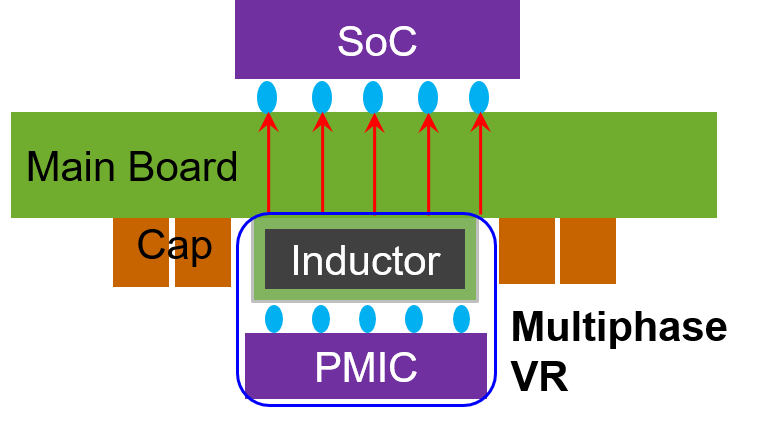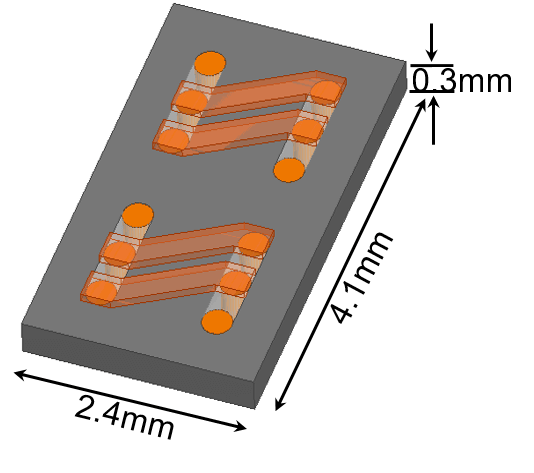LIBRARY
Ultra High Frequency Integrated Coupled Inductor Design For IVR in Smartphone Application

In this work, a novel, four-phase integrated coupled inductor structure is proposed, shown in Fig. 2. The structure exploration and design process are illustrated with the help of a finite element tool.
The new inductor structure, operating at 20 MHz switching frequency, features a large current handling ability (15 A peak current) and a very small inductor loss (0.7 W) with a very small footprint (9.6 mm2) and profile (0.3 mm). The inductor sample is fabricated and experimentally tested to verify the design. The thermal performance of the inductor is tested. The inductor is thermal manageable, even operating at 20 MHz due to large surface-area-to-volume ratio of a low-profile inductor structure. Compared with previous inductor design, 70% inductor loss reduction and a 40% footprint and thickness reduction are realized by the new inductor structure.























































































